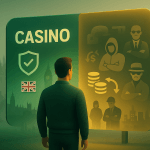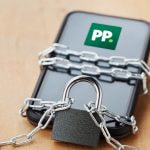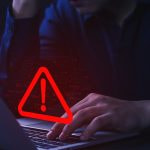Our Blog
 Published on: 9 October 2025
Published on: 9 October 2025
In 2025, a Chinese court sentenced members of the Ming family to prison and even death for running a vast cross-border crime empire tied to casinos in Laukkaing, Myanmar. The case showed that unlicensed gambling is never just a harmless risk – it can bankroll trafficking, torture, and industrial-scale fraud. What began as a casino […]
 Published on: 9 October 2025
Published on: 9 October 2025
In September 2025, the UK Gambling Commission (UKGC) released a landmark report titled “Illegal online gambling: Consumer awareness, drivers and motivations”. This was the Commission’s first dedicated investigation into how and why UK players use unlicensed gambling sites. While it doesn’t focus solely on non-GamStop casinos, its findings offer vital insights into this growing trend. […]
 Published on: 2 September 2025
Published on: 2 September 2025
In the UK, a steep tax hike on gambling is being debated, with duties potentially rising from 21% to 50%. The whole industry is in the frame, from sports betting to online casinos, but slots have become the headline target because they generate the most revenue and attract the most scrutiny. It’s important to stress […]
 Published on: 2 September 2025
Published on: 2 September 2025
By the editorial team at Scams.info A new type of online fraud is sweeping across social media platforms, targeting millions of people with what appears to be legitimate gambling websites. Security researchers have coined the term “Scambling” – a combination of “scam” and “gambling” – to describe these sophisticated operations that are designed from the […]
 Published on: 24 July 2025
Published on: 24 July 2025
In July 2025, Flutter Entertainment – the company behind Paddy Power, Betfair, Sky Bet, and Tombola – confirmed a serious data breach affecting up to 800,000 users. While no payment details or passwords were exposed, cybersecurity experts are warning of more sophisticated scams targeting players in the aftermath. This was not just a minor glitch. […]
 Published on: 28 April 2025
Published on: 28 April 2025
The slot stake limits in the UK are changing in April and May 2025. For 18-24 year olds, the new maximum stake will be £2 per spin and £5 per spin for players aged 25 and over. Like many others, you may have recently received an email from a casino operator regarding the new slot […]
 Published on: 6 December 2024
Published on: 6 December 2024
A Random Number Generator (RNG) ensures randomness in online games, making each outcome unpredictable. However, certification is essential to guarantee the RNG’s fairness, confirming it’s been tested and verified by independent bodies. Certified RNGs protect players by offering unbiased, transparent game results. Why Certified RNGs Are Crucial ✔️ The Basics of RNG 🔑 Certified RNG […]
 Published on: 11 October 2024
Published on: 11 October 2024
Players want to be paid their winnings as soon as possible, but some factors can cause delays—some in their control and some outside. Here, we examine all the reasons behind delays in online casino withdrawals. What Are the Reasons for Slow Withdrawal Times from UK Casinos? Withdrawal delays at UK online casinos can stem from […]
 Published on: 20 September 2024
Published on: 20 September 2024
Unlicensed online casinos might seem appealing with bigger bonuses and fewer restrictions, but they carry significant risks for UK players. Understanding these dangers is essential for making safer gambling choices. Why Offshore Casinos Aren’t Worth the Risk While unregulated online casinos, including many offshore platforms, may offer enticing perks, they come with hidden dangers that […]
 Published on: 23 August 2024
Published on: 23 August 2024
Online casinos have surged in popularity, attracting players from all over the world with their dazzling graphics and exciting games. It’s easy to keep your focus on these grandiose bells and whistles. However, there’s much more to consider when determining what makes a top online casino. What to Look for in the Best Online Casinos […]
 Published on: 9 October 2025
Published on: 9 October 2025








